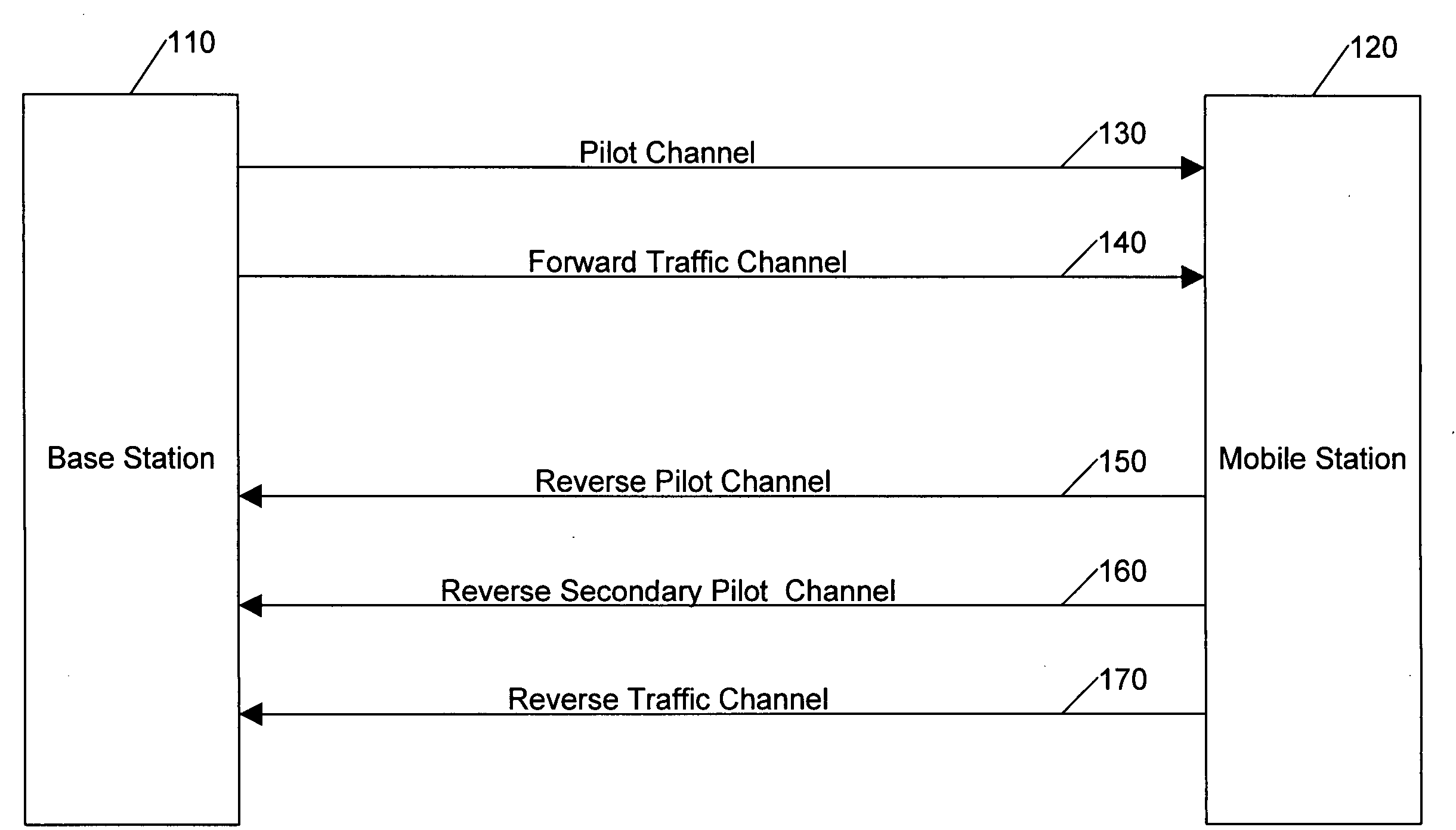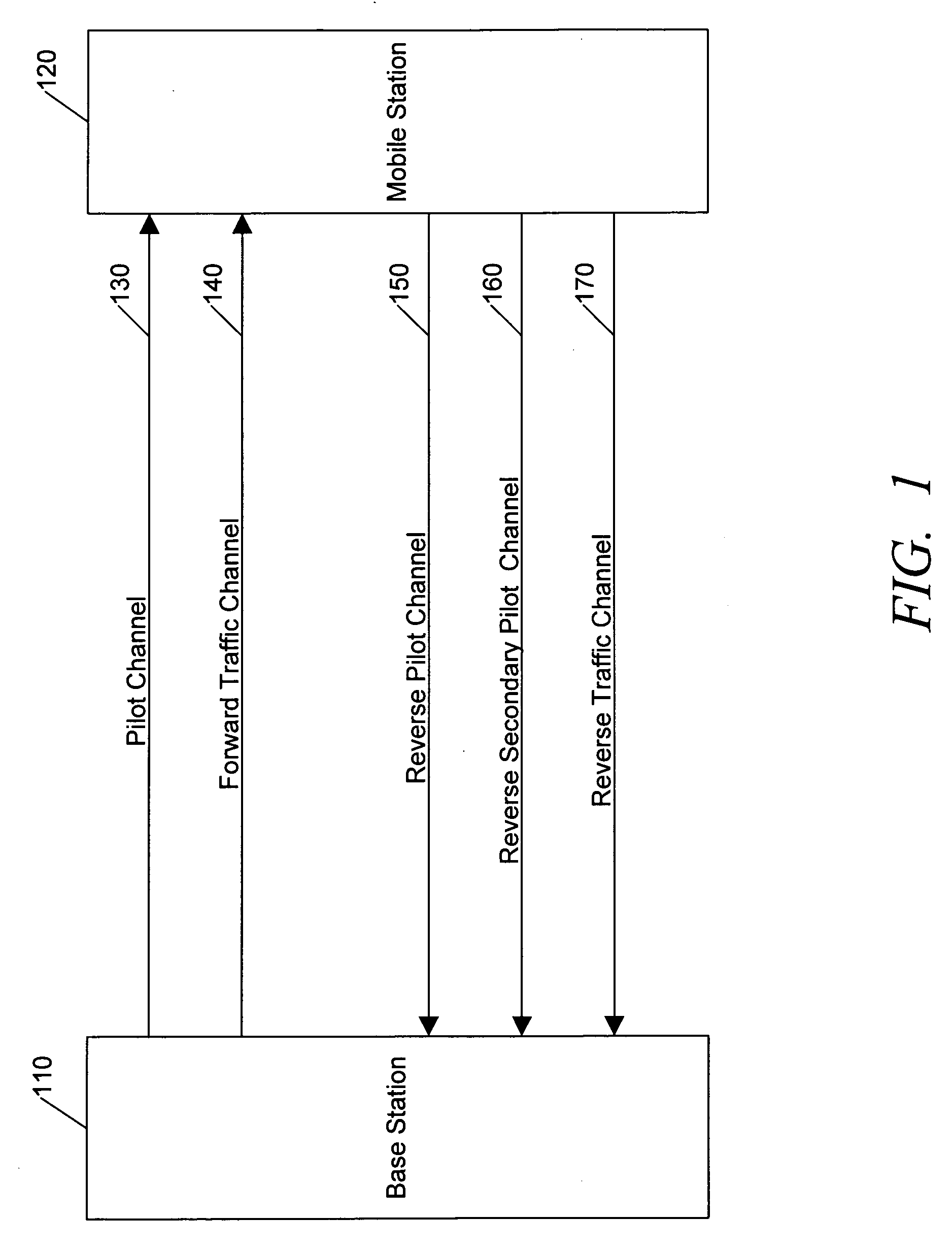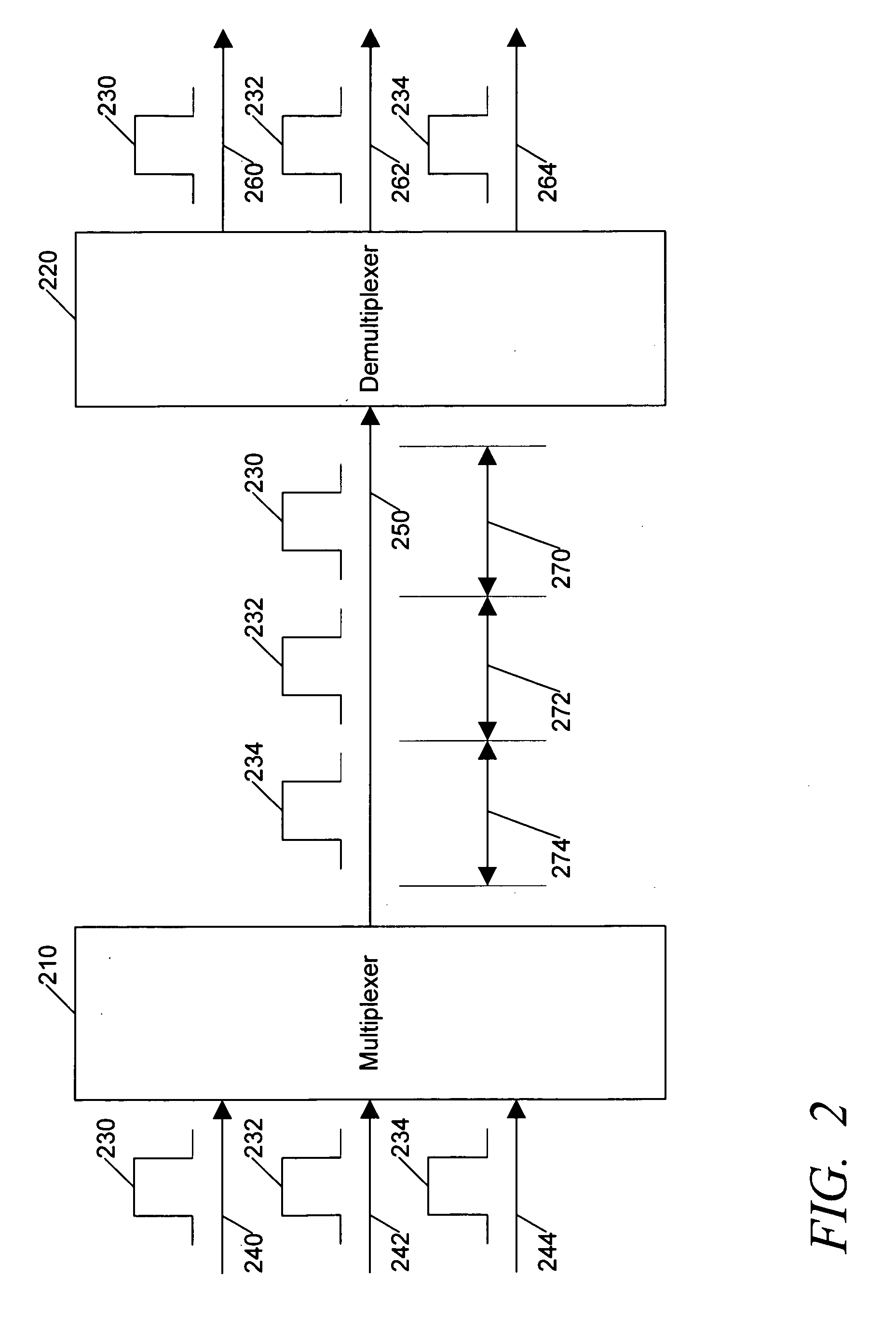Pilot signal enhancements for a wireless communication system
a wireless communication system and pilot signal technology, applied in multiplex communication, power management, sustainable buildings, etc., can solve the problems of stale information, delay in combining process, and least optimal up-to-date, etc., to achieve the effect of improving performan
- Summary
- Abstract
- Description
- Claims
- Application Information
AI Technical Summary
Benefits of technology
Problems solved by technology
Method used
Image
Examples
Embodiment Construction
Overview
[0023]A pilot channel (PICH) in a CDMA system is typically a non-data-bearing spread spectrum signal employed to enable a receiver to acquire the timing of one or more associated data-bearing (traffic) signal channels, and to provide a phase reference for coherent demodulation of such associated traffic channels. According to prior art, a PICH should not be modulated because modulation would degrade the ability to determine timing and phase information from the PICH. However, the teachings below show that information can be advantageously conveyed by modulating a pilot channel (particularly, in some embodiments, a secondary pilot channel or SPICH). This may be particularly useful, for example, when the value of a modest amount of information, if received in a timely fashion, exceeds the slight penalties imposed by variable modulation of the pilot signal.
[0024]FIG. 1 is a simplified block diagram of a wireless communication system showing a base station (BS) 110 and a mobile ...
PUM
 Login to View More
Login to View More Abstract
Description
Claims
Application Information
 Login to View More
Login to View More - R&D
- Intellectual Property
- Life Sciences
- Materials
- Tech Scout
- Unparalleled Data Quality
- Higher Quality Content
- 60% Fewer Hallucinations
Browse by: Latest US Patents, China's latest patents, Technical Efficacy Thesaurus, Application Domain, Technology Topic, Popular Technical Reports.
© 2025 PatSnap. All rights reserved.Legal|Privacy policy|Modern Slavery Act Transparency Statement|Sitemap|About US| Contact US: help@patsnap.com



